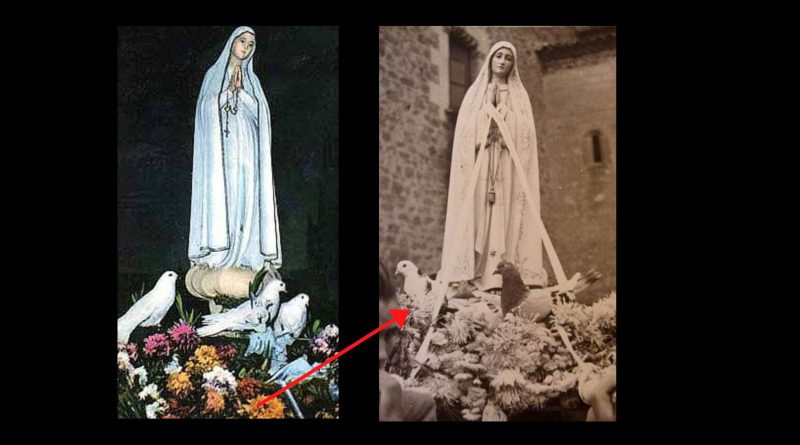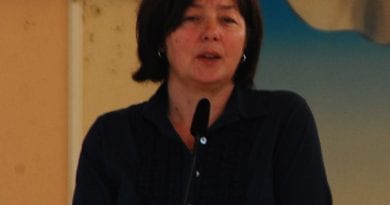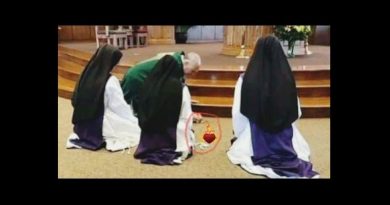The little-known miracle of the “Three Doves” at Fatima
Source: Devotion to Our Lady of Fatima
Why do some images of Our Lady Of Fatima have three doves at the base
Let’s see…
THE MIRACLE OF THE THREE DOVES AND OUR LADY OF FATIMA
The miracle of the doves:
The statue of Our Lady of Fatima left the Cova da Iria for Lisbon in 1946. On this occasion, white doves let loose by someone in the crowd, fluttered down to rest by the feet of the statue and remained there for days without food and drink, oblivious to the jostling crowds, blaring bands and the long road and river journey back to Fatima.
– A Pilgrim’s Handbook to Fatima
THE MIRACLE OF THE DOVES OF BOMBARRAL
In December 1946, an unusual incident took place in Portugal that was unprecedented and of extraordinary proportions. This incident of common delight became known as the “Doves of Bombarral.” It is a story of how three doves paid homage to the Queen of Portugal by their presence for over a week during a procession in her honor.
Three hundred years earlier, King Joao IV of Portugal removed the crown from his head and placed it at the feet of a statue of the Blessed Virgin declaring her the Queen and Patroness of Portugal under the title of the Immaculate Conception. To celebrate the third centenary of this, two things occurred. On May 13, 1946, a personal legate of Pope Pius XII crowned the little statue of Our Lady of Fatima with a crown of precious jewels donated by the women of Portugal. Also on December 8, a great celebration was planned for the feast of the Immaculate Conception. The statue was to be carried in procession from Fatima to Lisbon. Cardinal Cerejeira, Patriarch of Lisbon, would renew the consecration of Portugal to the Immaculate Conception in Lisbon’s ancient cathedral.
On November 22 the statue began the ninety mile journey to Lisbon on a platform covered with white flowers. It was carried from town to town and during the night it was set in one parish church after another amidst demonstrations of filial homage and welcome. About 40 miles from Lisbon, the procession came to the city of Bombarral, once noted for its anti-clericalism.
Special Honors for Mary
There five doves were released in a beautiful flutter of white wings. Three of them flew to the statue and settled in the flowers at the base. Fearing that they would displace the flowers or soil the statue, the men who carried it tried to shoo them away. But their efforts failed and the doves were allowed to remain. The journey from Bombarral to Lisbon took five days. All this time, the doves remained nestled in the flowers at the base of the statue.
When Cardinal Cerejeira welcomed the statue at the door of Our Lady of Fatima church in Lisbon, the doves left the statue for the first time in five days and approached him. During the two days that the statue remained in the Church of Our Lady of Fatima, the doves would fly between the statue and the patriarchal throne. One December 7, during the lengthy distribution of Holy Communion, one of the doves perched itself on top of Our Lady’s crown with its wings wide open. The other two flew up to the church ceiling and hid themselves, “as though,” the Cardinal said, “their mission had already been accomplished.”
When the statue was carried from Our Lady of Fatima church to the cathedral, two doves remained poised on the edge of a stained-glass window depicting the angels in glory surrounding the throne of exposition. They turned toward the statue as it was leaving. Outside, a heavy rain which had been falling suddenly stopped. The sky became clear, and the moon appeared. The two doves joined their companion at the statue remaining there for the entire procession to the cathedral.
A candlelight procession of hundreds of thousands of people, with trumpeters on horseback, members of religious orders, and the cardinal and bishops in their robes accompanied the statue to the beautifully lit cathedral. Because of sporadic rain, the powerful lights created a rainbow. As Our Lady’s statue was taken into the cathedral, one of the doves flew to the top of the cathedral tower and remained there for some time as if pointing to the fact that they had finally reached their destination.
There was an all-night vigil in the cathedral, and on the morning of December 8, the Feast of the Immaculate Conception, the cardinal celebrated a Pontifical Mass. The centenary celebration reached its climax in the renewal of the act of consecration of Portugal to the Immaculate Conception. That evening the statue left the cathedral and was placed on a fishing boat to be taken across the Tagus River on its way back to Fatima. The press reported the “doves” being with the statue in the town of Entrocamento on December 22. The procession returned to Fatima on Christmas Eve.
Tremendous love and affection were shown for Our Lady by this procession of her image. Countless people and towns participated in the festive event. But an important part of this story is the presence and deportment of the doves through the week of December 1-8.
In his book, “Vision of Fatima,” Father Thomas McGlynn writes that Cardinal Cerejeira is well aware of the symbolic presence of doves in the Christian traditioni, such as the dove of Noah’s Ark or the dove at the baptism of Our Lord. Father McGlynn also points out that in addition to the Three Persons of the Blessed Trinity, the three theological virtues and the three Fatima children, the number three in this case could also stand for the three centuries of Portugal’s consecration to the Immaculate Conception, which the Doves of Bombarral so beautifully helped celebrate in December 1946.
SOURCE:This story appeared in Soul Magazine, Issue 4, 2007







